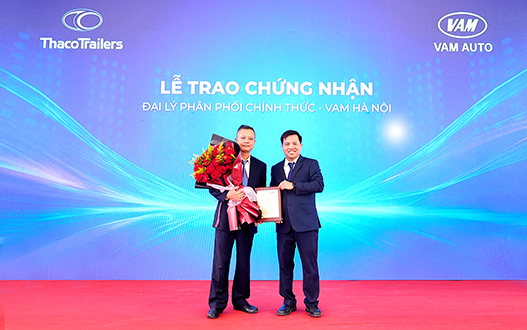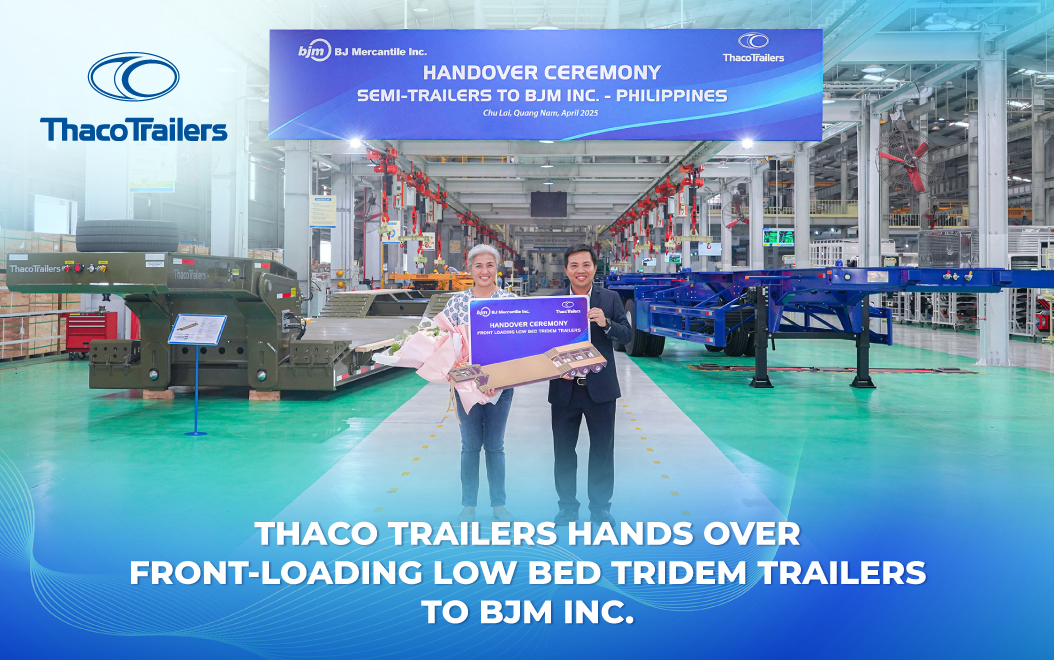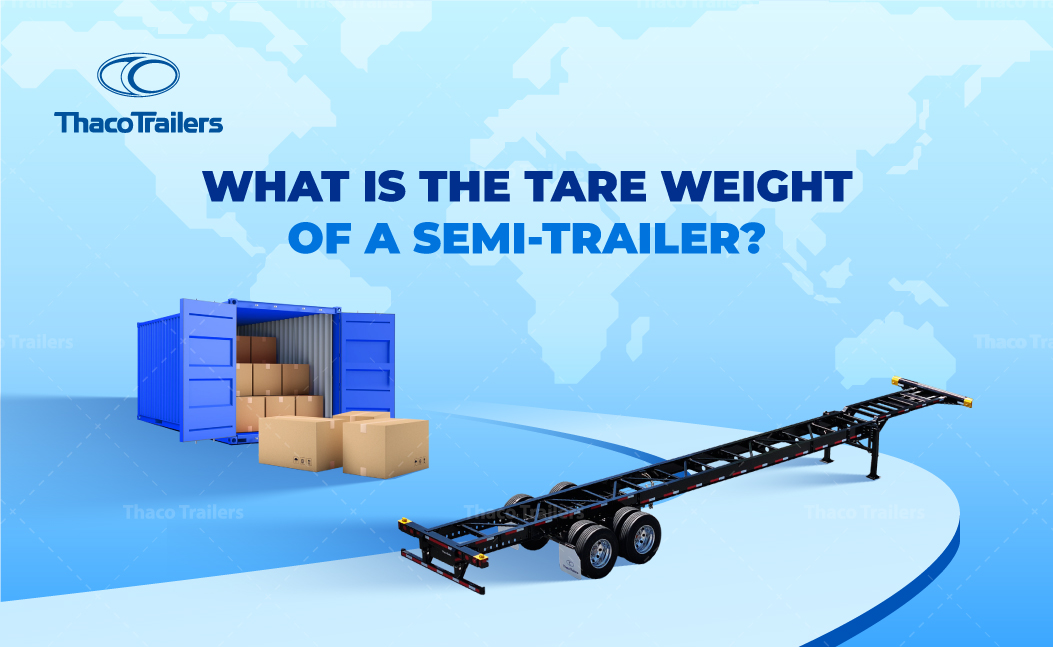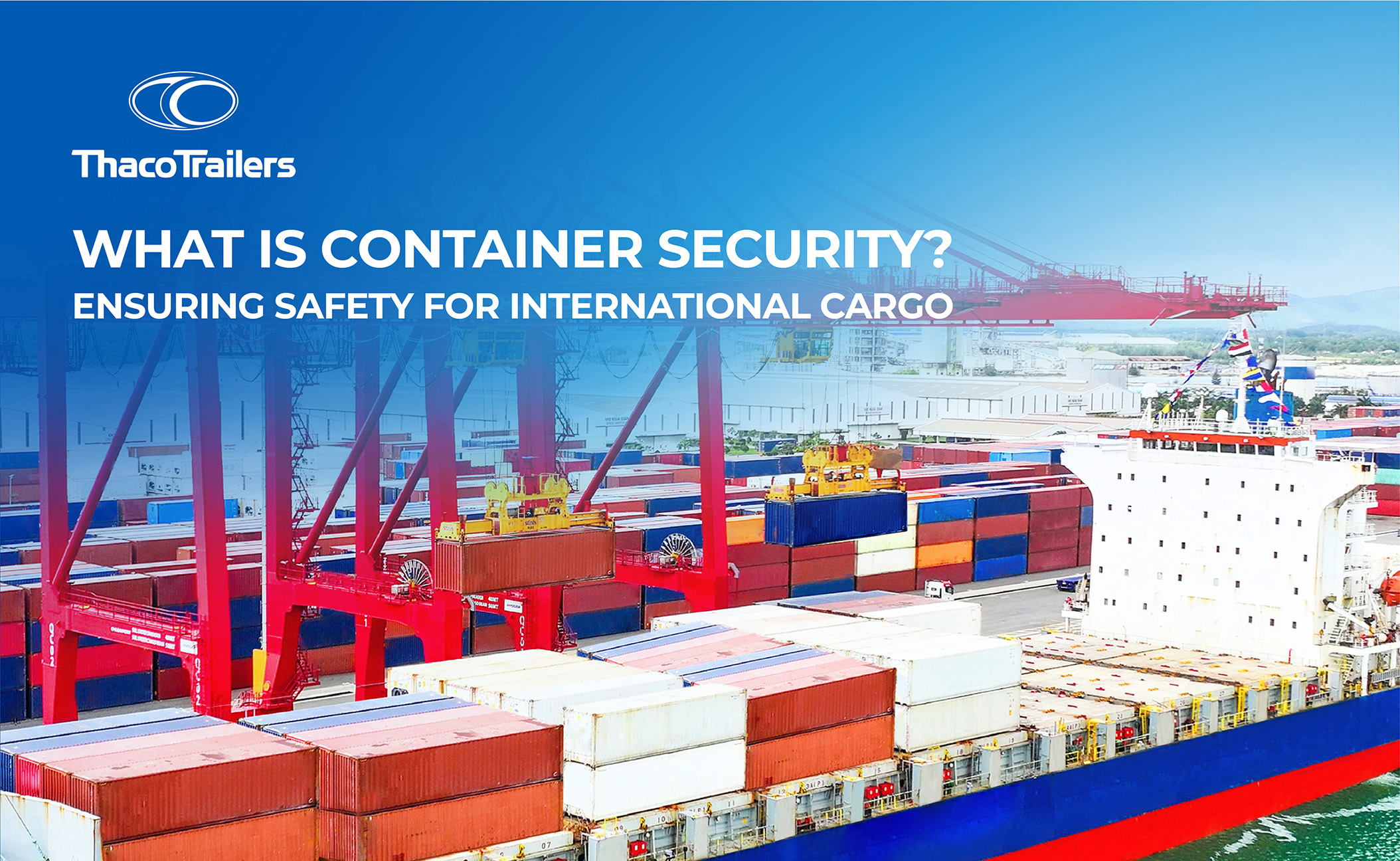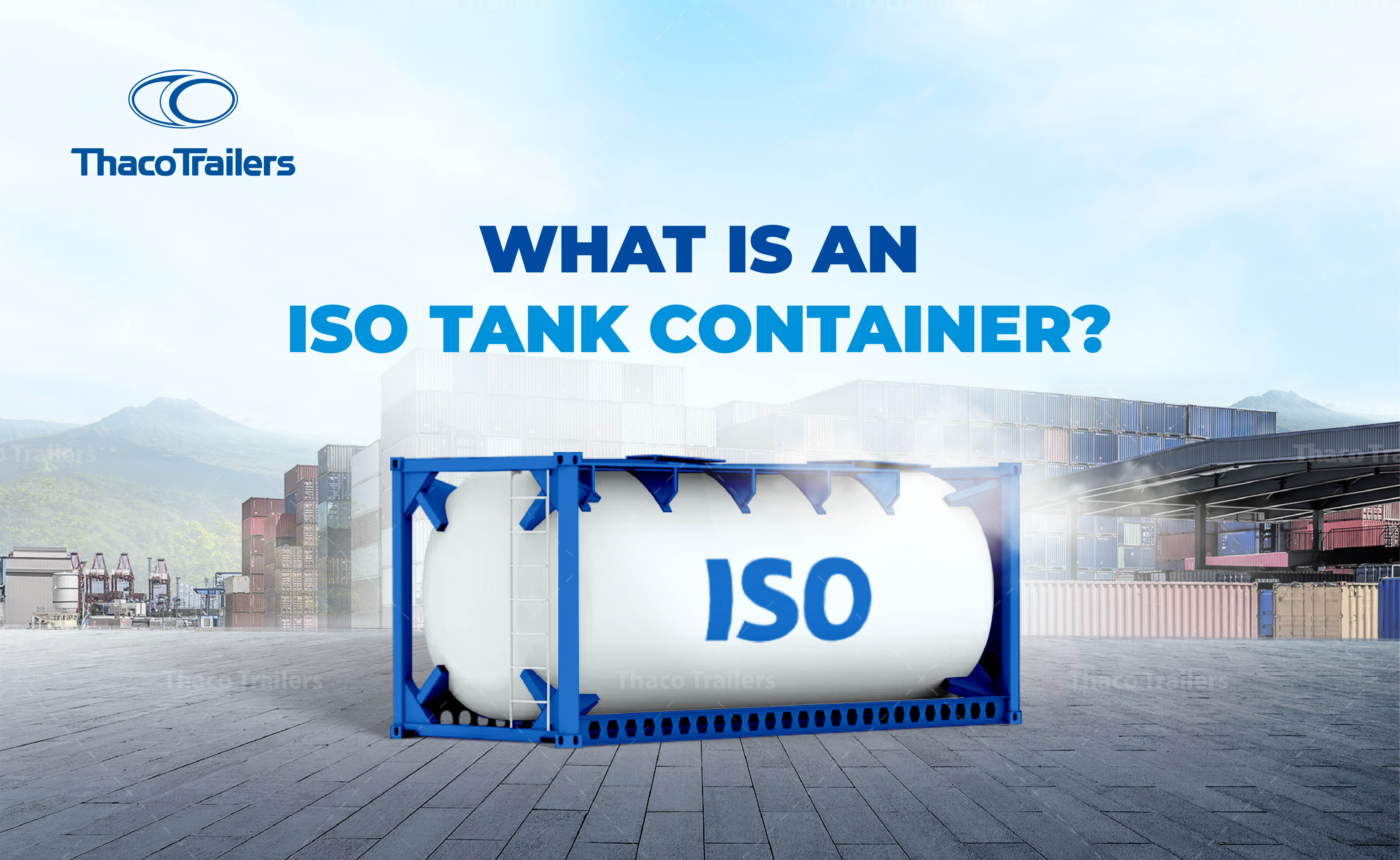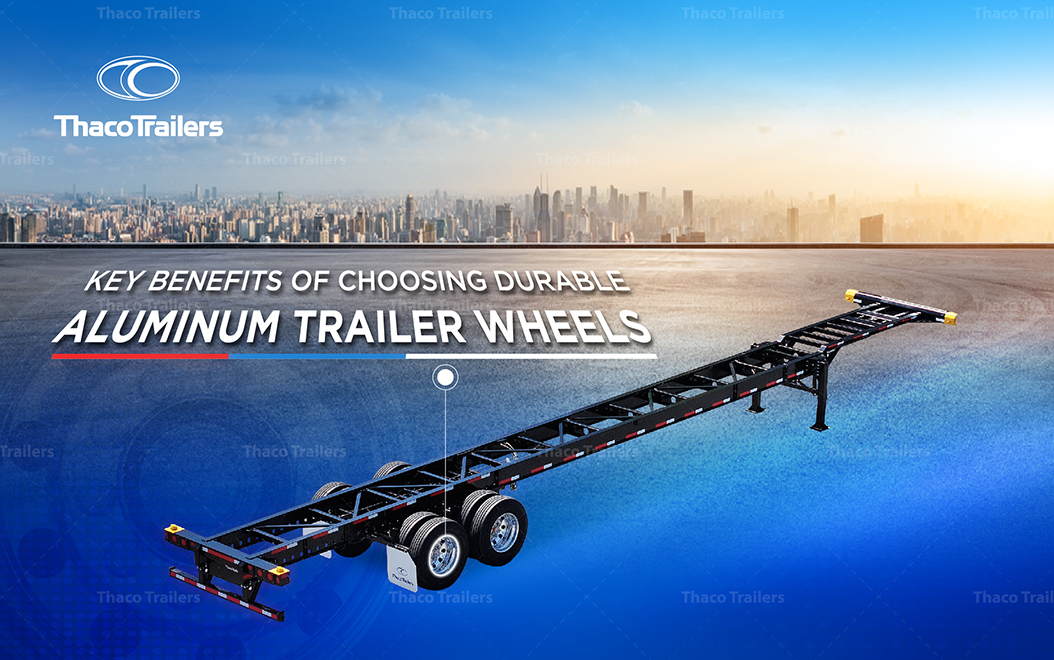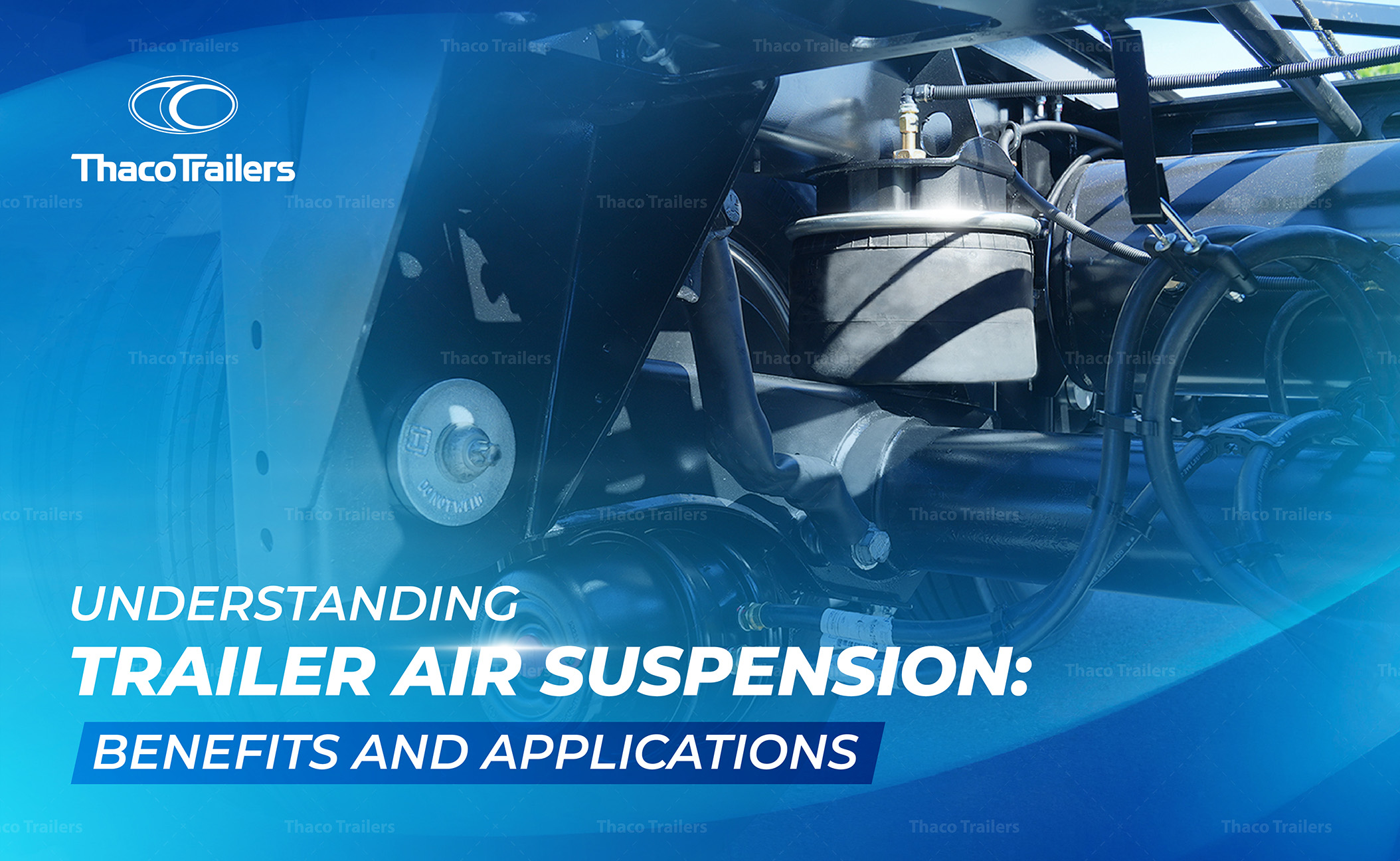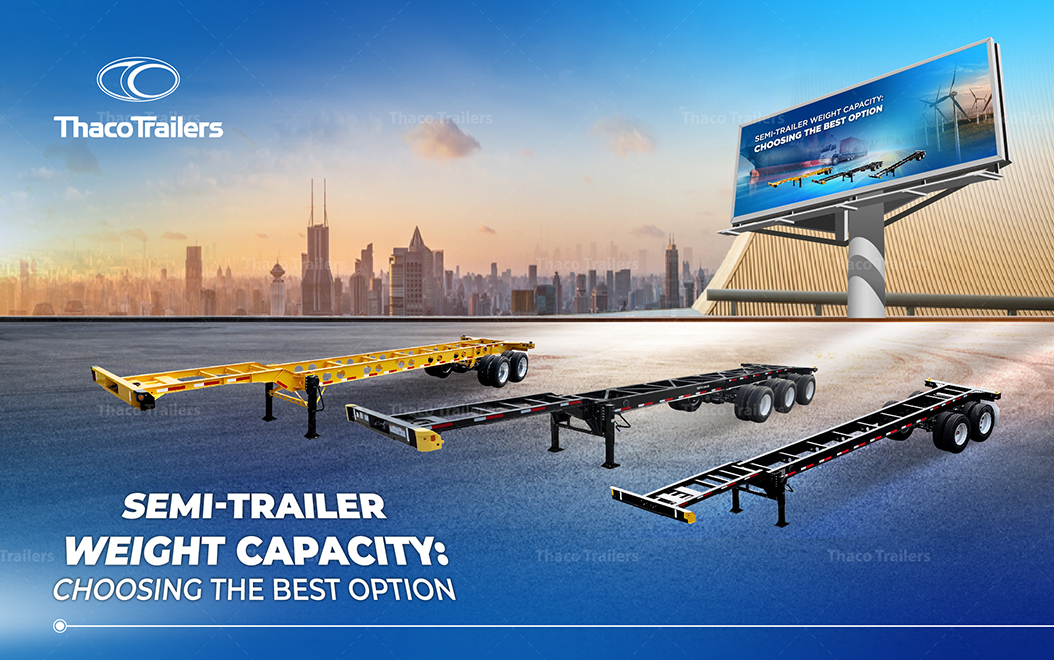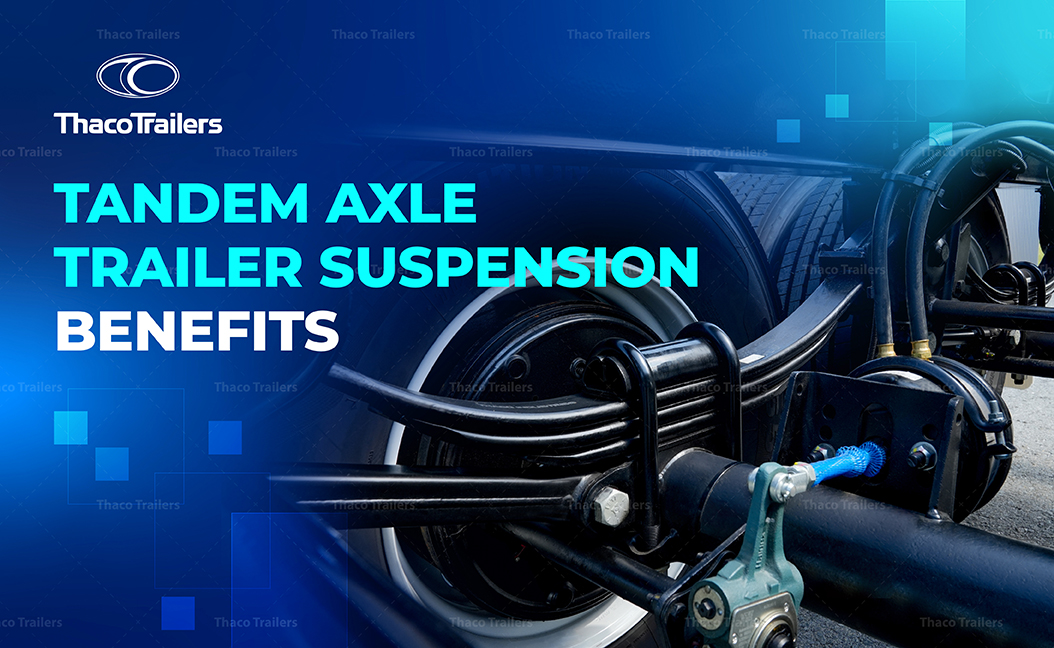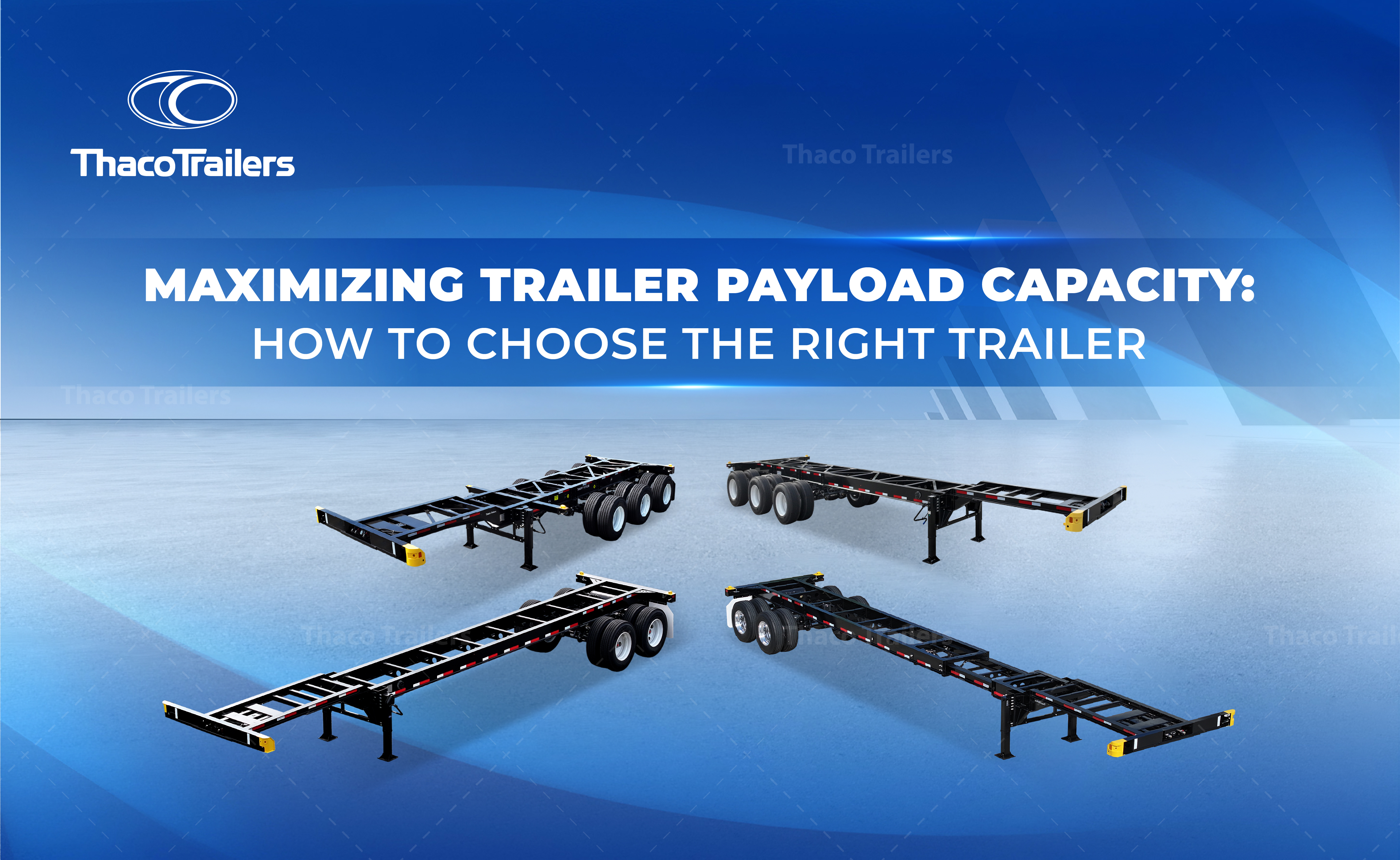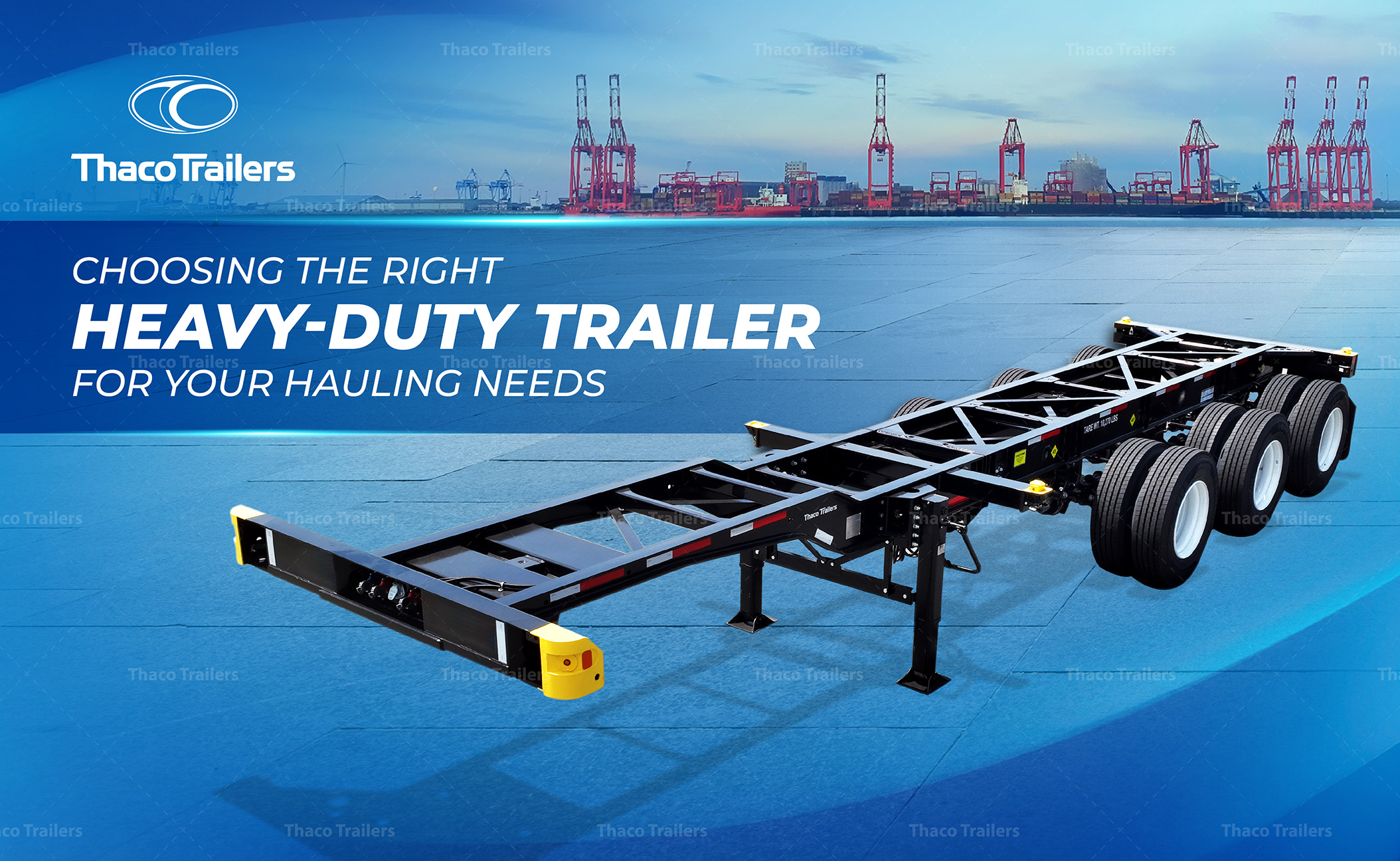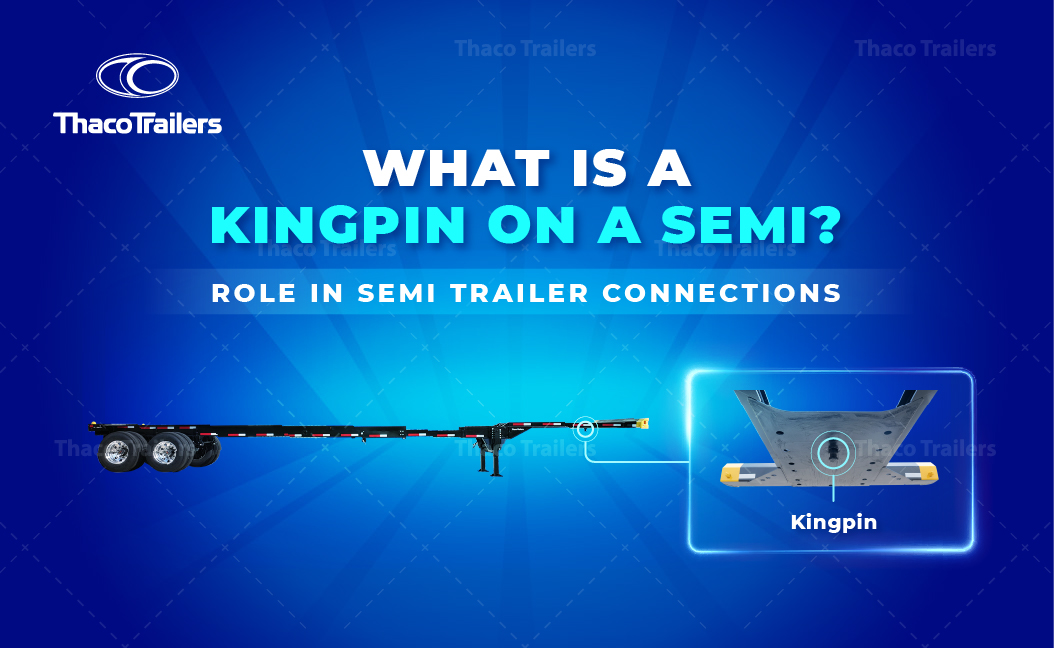TRACTOR AND SEMI TRAILER: KEY CONSIDERATIONS FOR OPTIMAL USE
Operating a tractor and semi trailer combination effectively is crucial for achieving optimal performance in the freight transport sector. The choice of suitable vehicle, proper weight distribution, and regular maintenance are key to ensuring the smooth, safe, and economical operation of the vehicle. In this article, Thaco Trailers will show you how to enhance your setup such that it will be effective over the long haul.
What is a tractor?
A tractor, often called a truck or prime mover, is an engine-driven vehicle used to tow semi-trailers. The tractor, also known as the cab or the power unit, houses the engine, driver’s compartment, and all the necessary controls. Its primary function is to deliver the necessary force to transport goods over long-haul journeys. Tractors are engineered for high durability, featuring robust engines and advanced suspension systems designed to handle heavy loads across diverse terrains.
Read more: What is a shipping container chassis? Types and uses explained
Power and towing capacity of tractors
The power of a tractor plays a vital role in its towing capacity. Two key elements engine horsepower and torque, define the weight it can tow and how well it performs in challenging conditions. Higher horsepower provides greater speed, while more torque enables the tractor to haul heavier loads uphill or through rugged areas. Another key element of the towing capacity of tractors is their transmission and gearbox, with most tractors having a 12, 18, 20, or even 24-gear transmission system, ensuring the engine can deliver the most power at any given speed to tow at the rated capacity effectively.
Read more: Exploring the different types of trailer landing gear
Tractor types based on applications
- Day Cabs
Day Cabs are used for short-haul transportation, with no sleeper compartment, reducing the overall width, length, and weight of the tractor unit, making a day cab extremely lightweight and fuel-efficient compared to larger types of tractors.
- Sleeper Cabs
Sleeper cabs are equipped with a sleeping area for long-haul drivers. The sleeping area makes this type of cab suitable for interstate and cross-country operations, providing drivers with an option to rest in between driving sessions, anywhere on the route without having to find accommodation. Sleeper cabs often come in various sizes, with the larger options including additional space for storage and amenities.
- Specialty Cabs
Specialty cabs are purpose-built enclosures designed to protect operators and equipment in various industries. These cabs are configured with specific features such as soundproofing, climate control, vibration dampening, and ergonomic seating to optimize operator comfort and performance. They are widely used in applications such as construction, mining, agriculture, and industrial manufacturing. Some examples of specific types of specialty cabs include crane cabs, excavator cabs, and forklift cabs, each tailored to the unique demands of their respective industries.
- Aerodynamic Cabs
The aerodynamic cabin features smooth panels and deflecting components to reduce drag, significantly saving fuel costs, especially at high speeds gap covers and vortex generators reduce air resistance and significantly increase fuel efficiency. Most aerodynamic cabs are designed for long-haul tractors to maximize fuel savings. Their key design features include smooth, rounded body panels at the front to reduce air resistance, gradual height transitions from the driver’s cabin to the sleeping compartment for better airflow, and a narrowed gap between the tractor unit and the container to minimize still air pockets around the vehicle.
What is a semi-trailer?
A semi-trailer is a type of trailer that carries goods without a front axle, relying on a tractor unit for movement and support. It is widely used in logistics due to its flexibility, capable of transporting goods ranging from consumer products to heavy construction materials. Semi-trailers come in various sizes and functions, from smaller models used for personal purposes with a hitch to larger commercial semi-trailers connected to a tractor unit via a fifth-wheel system.

Read more: Reputable semi-trailer manufacturers – Thaco Trailers
Key uses of semi-trailers in logistics
Semi-trailers are essential to modern logistics, as they support the efficient transport of intermodal containers across various modes of transportation. This allows rapid and constant transport of goods, minimizing logistical time and cost. Some purposes of semi-trailers are as follows:
High-volume cargo transport: Semi-trailers accommodate large-scale shipments, optimizing bulk transportation for manufacturers, suppliers, and distributors. By streamlining logistics, they reduce transit time and enhance supply chain efficiency.
Transport of perishable goods: Refrigerated semi-trailers ensure that temperature-sensitive goods remain fresh by maintaining the appropriate temperature throughout transit.
Heavy machinery and vehicles: Flatbed, lowboy, and step-deck semi-trailers facilitate the transport of bulky equipment. Their open-bed designs provide a stable platform without the restrictions of sidewalls and a top cover, unlike standard containers.
Read more: Understanding Flatbed Semi Trailers: Features and Benefits
Different types of semi-trailers
There are various types and designs of semi-trailers available that can serve different transportation demands, depending on the types of cargo. Each type of semi-trailer is optimized for its specific purpose to maximize utility.
- Intermodal chassis (Container chassis): Intermodal chassis includes standard, extendable, and slider chassis.
- The standard chassis is the most commonly used, designed to carry containers of various sizes, typically 20ft and 40ft.
- The extendable chassis can adjust its length to accommodate containers ranging from 20ft to 53ft, providing flexibility for various container sizes and ensuring optimal load distribution.
- The slider chassis can adjust the container’s position to balance weight distribution, promoting safer and more efficient transport. They are designed to accommodate containers ranging from 20ft to 45ft.
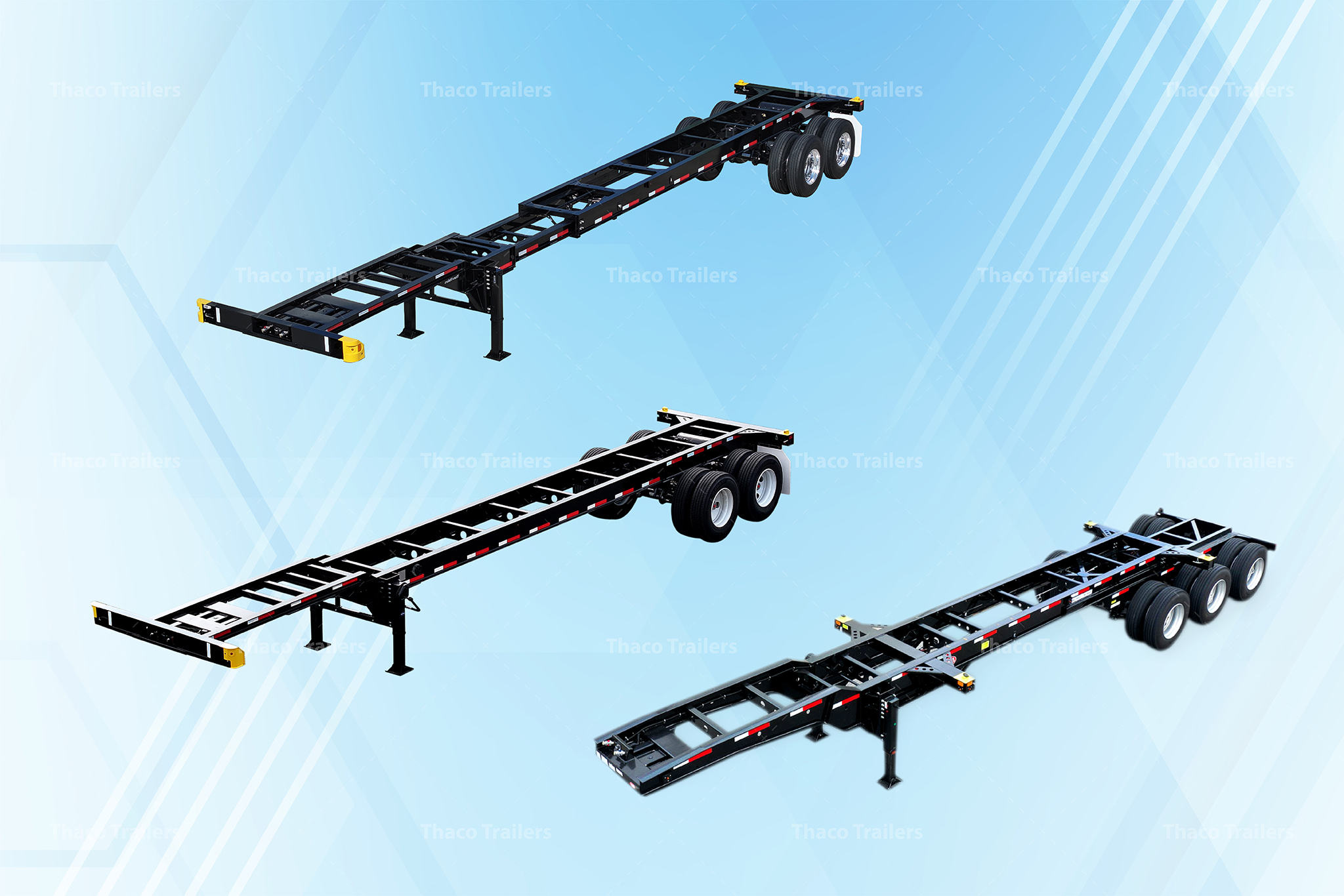
- Flatbed Trailers: Flatbed trailers have an open design, making them ideal for transporting large cargo with irregular shapes, such as equipment and constructions, that are too large to fit into a container. In contrast to other trailer varieties, this semi-trailer has loading and discharging access from any direction, making it a viable option for the construction, agricultural, and cargo industries. Nevertheless, the majority of these vehicles cannot enclose these cargoes, necessitating their appropriate restraint with harnesses, chains, or even tarpaulins during transportation.
Read more: What is the difference between Flatbed and Stepdeck?
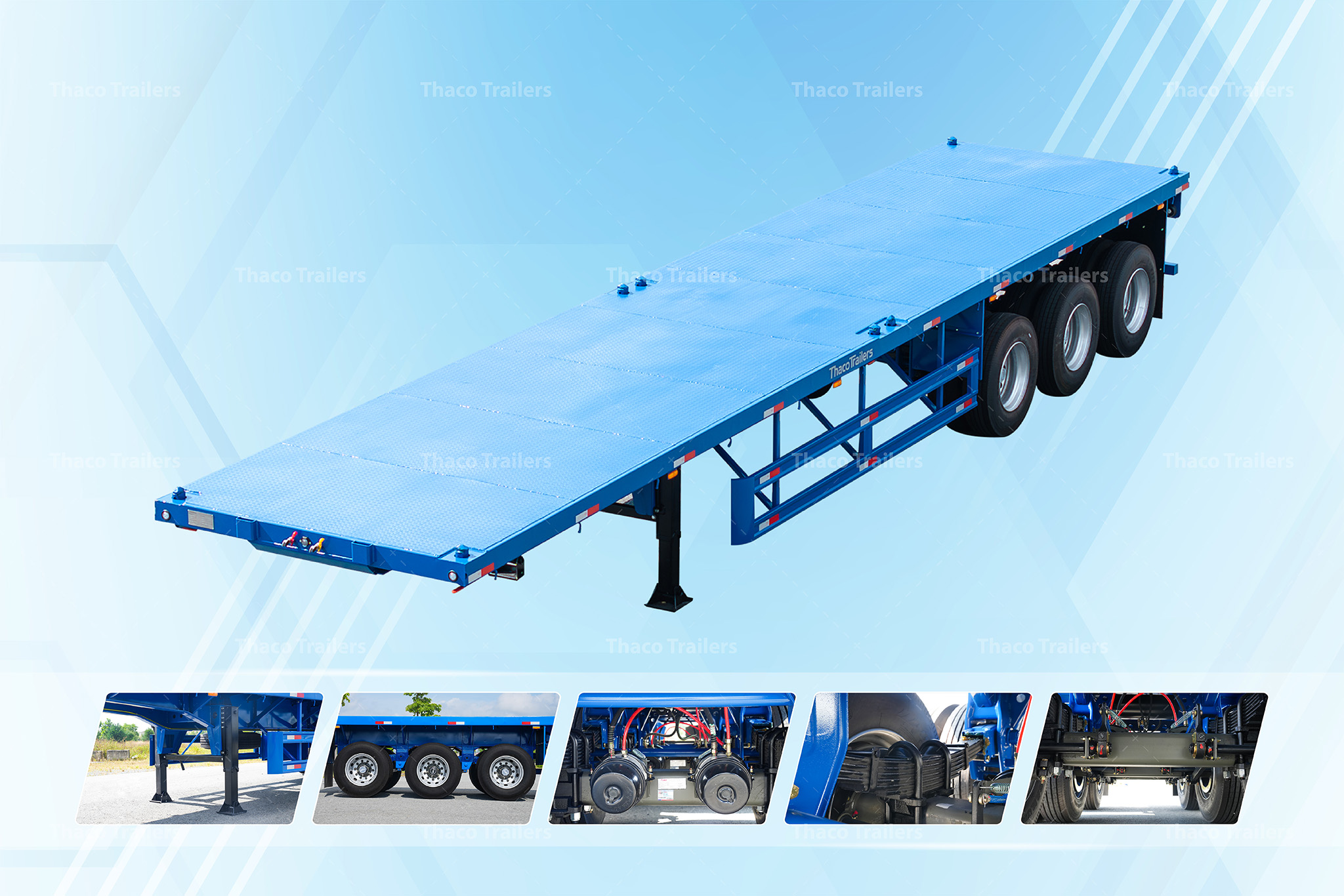
- Dry Vans: These are semi-enclosed, drop-frame containers designed to protect cargo from external factors such as weather, pollution, and theft. They are ideal for transporting goods that do not require refrigeration or special handling but still need secure enclosure and protection throughout transit. Common applications include transporting electronics, furniture, and clothing items that are sensitive to prolonged storage.
- Refrigerated Trailers (Reefers): Refrigerated trailers, also known as reefers, are equipped with temperature control systems to preserve perishable goods such as fresh produce, dairy products, meat, and pharmaceuticals. These trailers maintain a stable temperature from loading to unloading, regardless of external weather conditions, thanks to an integrated genset. Reefers play a crucial role in cold-chain logistics, ensuring food safety and product integrity during long-haul transportation.
- Tanker Trailers: This type of semi-trailer is specialized for transporting liquids, chemicals, gases, or fuel. These trailers may have different designs, however, are mostly cylindrical to minimize the movement of the liquid and surge during movement, ensuring stable and safe transportation. Depending on the type of liquid cargo being transported, tankers may be made from different materials and may be insulated or non-insulated. Tanker trailers play a crucial role in industries such as petroleum, and chemical manufacturing where bulk liquid transportation is often demanded. Safety regulations and proper cleaning protocols are strictly enforced when using tanker trailers to prevent contamination or hazardous spillage of liquids.
Read more: Thaco Trailers: Trusted Tanker Trailer Manufacturer for the US Market
Understanding the relationship between a semi-trailer and a tractor
How semi-trailers and tractors work together
The semi-trailers and tractors combine to form a semi-trailer vehicle unit. The tractor provides power and mobility, towing semi-trailers. The two vehicles are linked by a fifth-wheel hitch, a pivoting apparatus affixed to the rear section of the tractor. This hitch secures the tractor and semi-trailer while allowing the trailer to pivot freely, hence enhancing flexibility and mobility in traversing tight curves or uneven terrain.
The fifth-wheel hitch is the essential element of this truck configuration, facilitating the tractor’s navigation of the semi-trailer. It is especially advantageous in intricate driving situations, such as reversing into loading docks or executing turns in confined spaces, thereby ensuring effective maneuverability while accommodating a substantial length for optimal cargo capacity. This connection distributes the weight of the trailer over the rear axle of the tractor, improving overall stability, load handling, and traction.
Read more: Exploring the different types of trailer landing gear
Importance of compatibility between tractors and semi-trailers
Compatibility between tractors and semi-trailers is essential for safe, efficient, and cost-effective transportation. Every tractor has a specific power rating, weight limit, and hitch design, and must be aligned with the specifications of the semi-trailer being used. For example, a high-powered tractor may be necessary to haul a fully-loaded reefer across long distances due to the heavyweight total from the whole system, while a lighter-duty tractor may be more suitable for shorter, regional hauls with dry vans, decreasing overall weight and thus fuel consumption.
An incompatible pair of trailers can increase fuel consumption or even cause mechanical failure, posing a danger to transportation. On the other hand, pairing a heavy-duty tractor with a lightweight trailer may lead to inefficiencies, higher operational costs, or excessive wear on the tractor. Ensuring compatibility helps improve fuel efficiency, reduce maintenance costs, and ensure safer hauling practices.
Key considerations for efficiently using semi-trailers
Choosing the right type of tractor and semi-trailer
Selecting the right tractor and trailer combination is crucial for successful freight operations. Consequently, carefully considering several factors is necessary to ensure that the tractor and trailer are compatible for optimal performance.
Weight capacity: The tractor’s towing capacity must align with the trailer’s gross weight when fully loaded. Exceeding a tractor’s load capacity may result in unsafe handling, reduced performance, and potential legal consequences.s. Hence, verifying the tractor’s capacity to manage the trailer’s load guarantees efficient and secure delivery.
Cargo requirements: Different types of cargo demand different types of trailers. For example, temperature-sensitive goods such as food or pharmaceuticals require refrigerated trailers, while heavy industrial equipment or construction materials may need a flatbed trailer for easy loading and unloading. Therefore, the semi-trailer and tractor types are dependent on the specific transportation demand.
Route considerations: The intended transportation route is also crucial in determining the right tractor-trailer combination. Highways, urban environments, and rural roads all present different unique challenges. Routes with low bridges or narrow lanes may require tractors and trailers with lower clearance and specific dimensions. Routes with many uphill portions may require heavy-duty, high-power tractor units to ensure the truck unit can traverse the terrain. Planning for these factors ahead of time can prevent delays, avoid mechanical failures, and ensure smoother operations.
Regular maintenance and inspection
Like any other large vehicle, tractors and semi-trailers should undergo routine checkups to identify mechanical faults that could lead to accidents, ensuring safe operation and maintaining expected performance on the road. Key areas of concern for maintenance and inspection include:
Tire pressure and condition: Properly maintained tires help prevent blowouts, provide sufficient grip, and improve efficiency by reducing rolling resistance.
Brake systems: Brakes functioning properly are crucial for stopping the vehicle safely, especially in heavy traffic or emergencies.
Trailer lights and signal systems: Properly working lights and signals are essential for communication with traffic on the road. These systems should be regularly tested, preferably before every journey to ensure safe traveling and compliance with road safety and traffic regulations.
Structural integrity of the trailer: Routine checks of the trailer’s frame, hitch connections, walls, and other systems such as suspension are required for the unit to safely carry its load without the risk of collapse or mechanical failure.
Fuel efficiency and load management strategies
The use of fuel is an essential factor in improving operating cost efficiency for freight transportation operations. Optimizing the route, balancing the cargo weight distribution, selecting the appropriate vehicle setup, and maintaining the equipment can all help reduce fuel consumption.
Route optimization: Utilizing trucker GPS and traffic control systems enables drivers to avoid traffic jams, road closures, and other delays, therefore conserving time and fuel. Effective route design reduces the need for numerous stops and starts, hence decreasing fuel consumption.
Maintaining optimal tire pressure: Ensuring tires are filled to the manufacturer’s specified pressure levels lowers rolling resistance and enhances fuel efficiency.
Balanced loads: Appropriately allocating the weight of the cargo across the trailer mitigates excessive strain on the tires, axles, and suspension system, improves maneuverability, and reduces the risk of accidents.
Read more: What you need to know about 40 ft gooseneck trailer weight
Safety and regulatory compliance
This covers knowledge of weight restrictions, correct load securing, and vehicle compliance with state and federal safety standards.
Furthermore, based on the anticipated payload weight and kind of goods, selecting the appropriate tractor and semi-trailer types ensures compliance with essential safety and regulatory standards. Following the rigorous criteria ensures the safety of drivers, vehicles, and cargo, safeguarding all aspects of the operation. Some critical factors to thoroughly consider are as follows:
Adhering to weight limits: Federal and state authorities impose weight restrictions to maintain road safety as well as to prevent infrastructure damage. Weight limits are defined by various factors, such as gross vehicle weight, axle weight, and cargo load. Choosing the appropriate tractor-trailer combination ensures that the vehicle is rated for the intended cargo weight, and can safely handle the weight with sufficient braking, suspension, and handling.
Securing loads to prevent shifting: Proper load securing is essential to prevent the cargo from shifting during transit. Shifting freights can cause instability, leading to rollovers, accidents, or damage to the cargo. Different types of semi-trailers need different methods for load securing. For example, flatbed trailers often require chains, straps, or ropes to anchor the load and prevent movement, and tarps may also be used to cover the load to protect it from the environment; while container chassis trailers mostly have twist locks to secure intermodal chassis to the semi-trailers.
Safety and regulatory compliance: Freight operators must ensure that regulations, including weight limits and load securing as mentioned above, are met. This not only eliminates the risk of non-compliance, legal issues, and fines, but also ensures that the chosen tractor-trailer combination is suitable for the transportation needs, and thus warrants a safe and efficient transportation of goods.
Explore Thaco Trailers’ semi-trailer for your hauling needs
Thaco Trailers is the leading semi-trailer manufacturer in Vietnam. Thaco Trailers, renowned for its outstanding manufacturing capabilities and compliance with international quality standards, has sold its products to major markets such as the United States, Canada, Mexico, and Australia. Thaco Trailers currently produces and offers a variety of product configurations, including Intermodal chassis (standard chassis, slider chassis, extendable chassis), Specialized semi-trailer and semi-trailer parts/components, customized to meet the specific requirements of customers. These products are characterized by numerous advantages, such as low tare weight, high payload capacity, outstanding durability, and versatile configurations, ensuring consistent and economical performance while strictly complying with North American market standards, including DOT, AAR, ANSI, TOFC, F(C)MVSS, SAE, and TTMA.
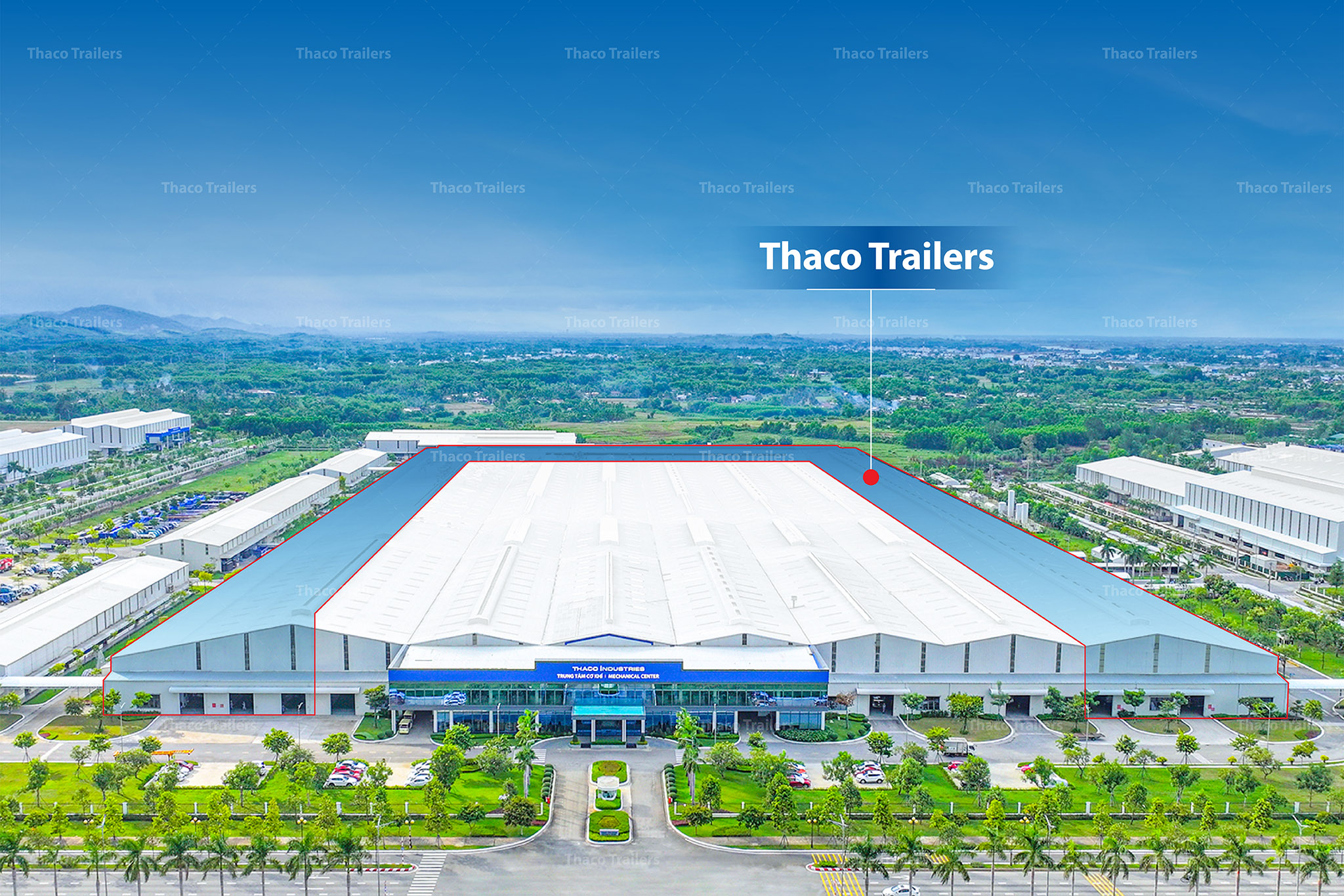
Thaco Trailers provides an extensive selection of semi-trailers in the North American market via a distributor network including Dorsey, Ocean Trailer, and Greenfield Products. Our objective is to establish ourselves as a dependable partner by cooperating with North American companies to provide OEM semi-trailers and semi-trailer components, therefore delivering efficient and adaptable transportation solutions.
By collaborating with us, secure and efficient cargo delivery to its intended destination is guaranteed. If you want to look for more information about our semi-trailers, please visit our product pages or contact us today if you have any questions, and we will recommend the right container chassis for you.
Contact Information:
- Hotline: (+84) 933 805 707
- Email address: thacosv@thaco.com.vn
- Fanpage: https://www.facebook.com/thacotrailers.vn

